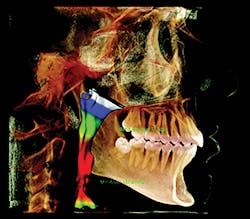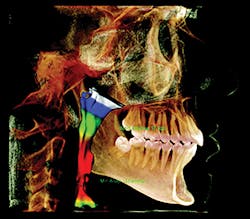The time is now to get accredited!
Christine Taxin
Patients seek out practices where they believe they will receive the most comprehensive exams and treatment, so they bill not only their dental carriers, but also their medical insurance if the dental procedures are deemed medically necessary. One of the most exciting advancements in oral care is the CBCT scan, and clinicians should be informed not only about how to effectively use these scanners, but also about the proper way to prepare for insurance billing and reimbursement. As a doctor using CBCT, you give patients the advantages of a dynamic imaging process; as a businessperson, you should reap the benefits of quick reimbursement for this growing imaging modality.
One evolving development in the insurance reimbursement arena is certification of 3-D imaging equipment, specifically regarding people covered under Medicare. The number of patients this will involve is phenomenal. As millions of patients reach their 65th birthdays each year, they will become entitled to health insurance under Medicare. While many dental practitioners have a younger patient base, such as pedo or orthodontists, and may think this statistic does not pertain to them, any practitioner who interacts with insurance companies has the potential to be affected in the future.
Here is the requirement as explained by the Centers for Medicare and Medicaid Services (CMS):
"Section 135 (a) of the Medicare Improvements for Patients and Providers Act of 2008 (MIPPA) required the Secretary to designate organizations to accredit suppliers that furnish the technical component of advanced diagnostic imaging (ADI) services."
These "advanced diagnostic imaging (ADI) services" include CT technology. The CMS further notes, "Oral surgeons and dentists must comply if they perform the technical component of MRI, CT or Nuclear Medicine for the technical component of the codes that require ADI accreditation." (Accreditation is also referred to as certification in this article.)
What this means in plain English is that all offices that offer CT-type technology, such as dental cone beam imaging, are to certify their facility that houses the imaging equipment to receive Medicare reimbursement. This does not mean that the doctor is getting certified; it means that the facility that houses the machine is being certified, much like an imaging center becomes certified. In my experience, this means that state and private insurance companies will also jump on the certification bandwagon in the future. This is not the time to worry, but it is the time to take action. There are people available to help make this a smooth and easy process.
Since CBCT is becoming an integral part of the processes of many dental offices, especially those working with sleep apnea and airway patients, this certification becomes more pertinent. Offices that do not know or that choose to ignore these recommendations will not have their claims paid by Medicare, and they may not know why. Unless the dentist or staff have some educational training on this or take the courses through Medicare, it is almost impossible to know the requirements or the ramifications of the imaging certification.
Medicare billing may seem complex, but when you comply with the rules, the process can be quite smooth. Being accredited will allow you to advertise and use that logo on your website. (See sidebar.)
Why am I so adamant about certifying 3-D imaging equipment when this certification is related only to Medicare patients? I believe that in the evolving health-care marketplace of the future, certification will become a necessary component for the billing of state insurances as well as private insurance companies-yes, private companies. Those taking CBCT scans for sleep apnea or implants should apply for certification now, or discuss the possibility with professionals who deal with this regularly. This is not an arduous process if you find professionals who know what to do and when to do it. Certifying your CBCT is one way to alleviate some of the hassles of insurance reimbursement for you and your patients.
The American College of Radiology: www.acr.org/Quality-Safety/Accreditation/CT
The Intersocietal Accreditation Commission: www.intersocietal.org/dental/
The Joint Commission: www.jointcommission.org/accreditation/ahc_seeking_imaging_centers.aspx
These three institutions offer differing processes for accreditation as well as fee schedules. There are also free educational webinars, books, FAQs, and tips for offices seeking accreditation.
Additional help can be found at www.dentalmedicalbilling.com.
More information specific to Medicare is available at www.cms.gov/Medicare/Provider-Enrollment-and-Certification/MedicareProviderSupEnroll/AdvancedDiagnosticImagingAccreditation.html
Christine Taxin is the founder and president of Links2Success, a practice management consulting company to the dental and medical fields. In her e-newsletter, The Ultimate Office Planner, Ms. Taxin offers subscribers practice management tips, help with insurance billing, marketing aids, and webinars. Her staff is working to help dentists with their accreditation for CBCT imaging.


